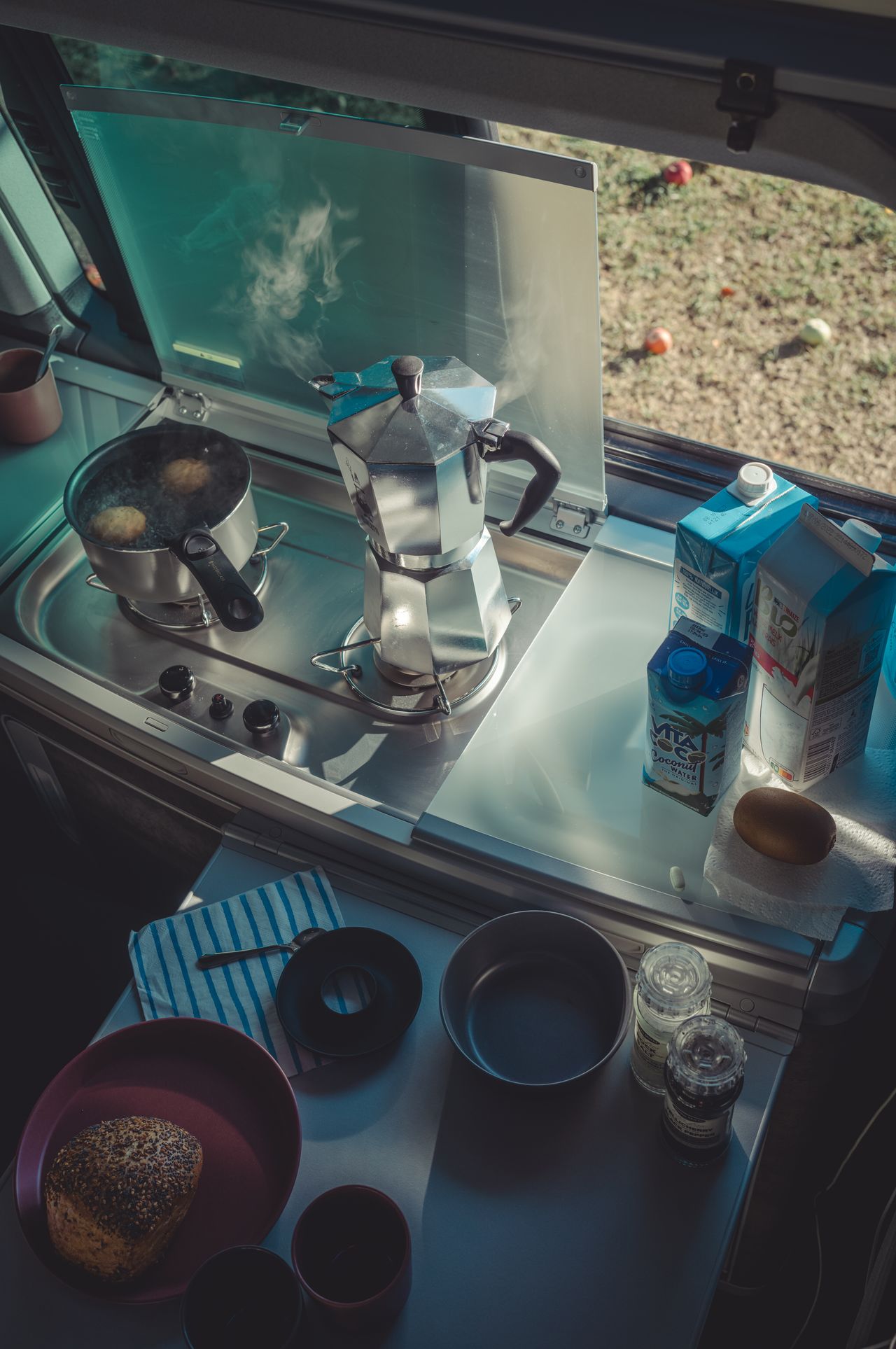Brewing coffee with a moka pot when camping
We're big coffee enthusiasts, and I proudly hold the title of "chief barista" in our family. Every morning, I grind beans, try to perfect espresso shots, steam milk, and craft lattes.
We also love camping, but obviously, lugging our espresso machine into the great outdoors isn't an option. Over the years, we've experimented with various brewing methods in an attempt to make our camping coffee as good as what we brew at home.
Ultimately, we've come to really like the moka pot, also known as a percolator, for camping. It delivers a strong, rich coffee that is somewhat close to an espresso due to its pressure-based brewing method.

Using the moka pot can be a bit tricky. Making good coffee requires getting the details right, which we tend to forget between trips. On our first morning camping, the coffee is often okay but not great. Each time, it takes a few mornings of trial and error to turn okay coffee into great coffee.
So, I've finally decided to document our steps, hoping it will help us brew the perfect cup from the first morning. I wrote down these steps for our own reference, but I'll keep tweaking them as we refine our technique.
What you need
- 12-cup Bialetti moka pot
- 750 ml of water (filtered preferred for best taste)
- 45 grams of medium-fine ground coffee
- Gas stove
- AeroPress filter (optional, for a smoother brew)
Even though we settled on a 12-cup moka pot, it actually makes four standard cups, as each 'cup' is more like an espresso size.

Brewing steps
- Prepare the water: Fill the bottom chamber of your moka pot with 750 ml of water. Keep it below the safety valve.
- Set up the coffee basket: Add 45 grams of medium-fine ground coffee (6 grams per 100 milliliters). Gently tap the basket to settle the grounds evenly; don't tamp it as you might with an espresso machine. If you're using an AeroPress filter, place it on top of the grounds. The filter is optional but can improve the coffee; it helps to evenly distribute the steam and ensure more uniform extraction. This results in a consistent color, smoother taste, and clearer brew.
- Start brewing: Assemble the pot and place it on a small burner with a medium flame. The coffee should flow gently into the upper chamber; if it sputters, the heat is too high. We keep the lid open to observe and adjust the flame as needed. Once the coffee starts percolating, watch it closely. Remove the pot from the heat when it is done, usually indicated by a hissing sound. Removing the pot from the heat helps prevent the coffee from becoming bitter.

Brewing tips
- Bialetti designs their moka pots to scale; the water chamber and coffee basket are proportioned. To brew without a scale, fill the water to the bottom of the pressure valve, fill the coffee basket and level it off without tamping. Filling them both should result in a decent brew.
- If the coffee extracts too fast, it will be under-extracted, resulting in sour or acidic coffee, often lacking richness and balance. To fix this, grind the coffee finer or use a lower heat.
- If the extraction is too slow, it will be over-extracted, it will taste bitter and harsh due to too many flavors being extracted. To fix this, grind the coffee coarser or use a higher heat.
That is all there is to it! Happy camping and happy brewing!